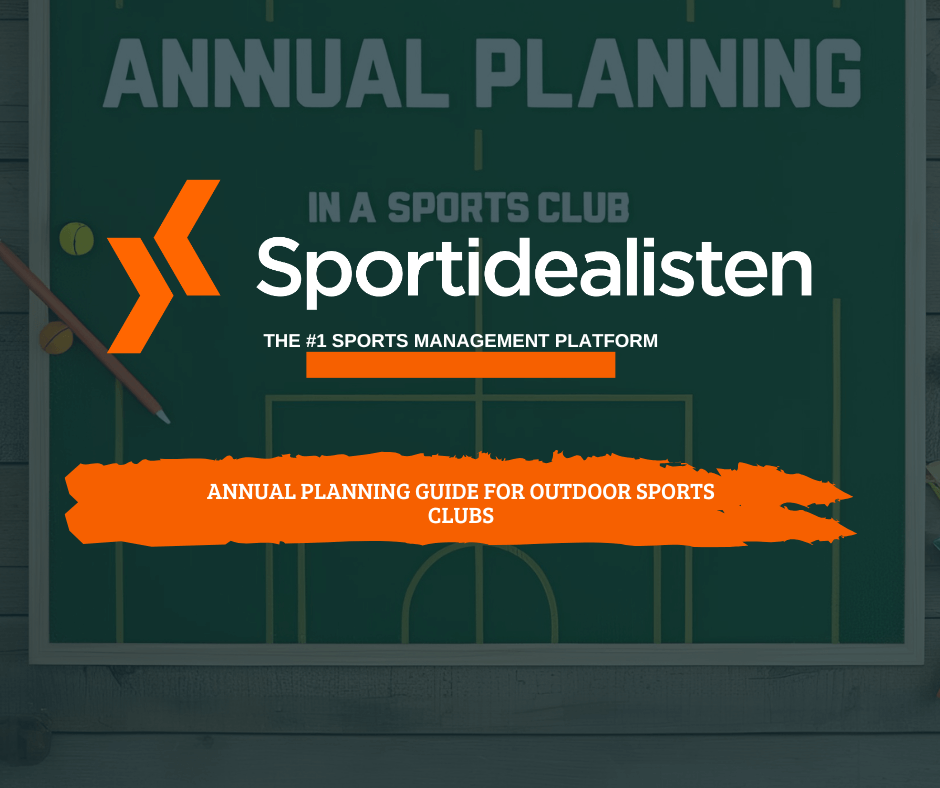Mastering the Indoor Season: A Quarterly Breakdown for Club Success
Indoor sports such as handball, basketball, volleyball, and floorball operate on a seasonal cycle running from autumn to spring. However, what separates good clubs from great ones is year-round planning. Here’s a quarterly guide to help your indoor sports club run smoothly and sustainably.
It’s highly beneficial for clubs to appoint someone to be in charge of updating the annual plan. Conducting a full review of the year in Q2 and approving the updated plan in Q3 ensures all stakeholders are aligned before the next season.
Planning Tip: Assign a “Planning Coordinator” or administrative lead who ensures each quarter’s tasks are completed, collects input from coaches, and keeps the board informed.
Q3/Q4: September–December – Season Launch and Foundations
- Kick off the new season with team registrations and training schedules.
- Apply for sanctioning for upcoming competitions.
- Update membership records and coaching contracts.
- Organize team-building and internal events.
Responsible Roles: Admin Lead, Coaching Staff, Membership Manager.
Checkpoints: October – Internal review of season setup. December – Mid-season update.
Tips:
- Meet with all coaches early to define expectations.
- Host a parent/player information night.
- Ensure facilities and equipment are fully prepped.
Key advice: September and October are make-or-break months to set rhythm and expectations.
Q1: January–March – Core Competition and Governance
- Continue league games and tournaments.
- Submit motions to federation meetings (by mid-Jan).
- Apply for LOK-stöd and pay federation fees.
- Review background checks and certifications.
Responsible Roles: Club Chair, Treasurer, Secretary.
Checkpoints: February – Mid-season board check-in.
Tips:
- Schedule board and section meetings monthly.
- Review budget status and adjust if needed.
- Use February to plan coach development sessions.
Why it matters: This quarter blends intense sport with key administrative duties. Balance is crucial.
Q2: April–June – Wrap-Up and Development
- Finish competitions and review performance.
- Host training camps and skill-building sessions.
- Evaluate coach and team development plans.
- Submit next season’s sanctioning applications.
- Hold the club’s annual general meeting and board elections.
- Review and update the annual wheel based on outcomes and feedback.
Responsible Roles: Development Lead, Coaching Director, Planning Coordinator.
Checkpoints: June – Planning session for next year with key stakeholders.
Tips:
- Create a player feedback form.
- Plan off-season workshops or mentoring programs.
- Prepare visuals and documentation for next AGM.
Extra tip: Capture data and feedback while the season is still fresh.
Q3: July–August – Reset and Pre-Season Planning
- Use summer break for rest and reflection.
- Plan training groups and sessions for the autumn.
- Book facilities for try-outs or youth camps.
- Have board approve updated annual plan.
Responsible Roles: Planning Coordinator, Chairperson, Facilities Manager.
Checkpoints: Early August – Final pre-season meeting.
Tips:
- Encourage staff to take vacation to reset.
- Distribute pre-season info kits to all members.
- Finalize any policy or governance updates.
What to focus on: A good pre-season strategy ensures a confident season start.
Summary: Key Takeaways for Year-Round Sports Club Planning
Whether your club runs on a spring–autumn (outdoor) or autumn–spring (indoor) schedule, a successful year hinges on smart, structured planning. Here’s a breakdown of the most critical elements for both types of sports environments:
Shared Best Practices for All Clubs
- Appoint a Planning Coordinator: This role is vital to track deadlines, gather input, and update the annual wheel.
- Quarterly Checkpoints: Build in reflection and adjustment sessions every 2–3 months.
- Board Involvement: The board should approve the updated annual plan before each season starts.
- Documentation & Feedback: Always archive learnings and collect feedback after each cycle for smarter planning next year.
Outdoor Sports Clubs (Spring–Autumn)
- Q1: Book fields, hold leadership meetings, and present training groups.
- Q2: Season launch, organize events, and monitor coach/volunteer well-being.
- Q3: Mid-season reviews, light summer training, and begin autumn planning.
- Q4: Wrap-up, evaluations, budget planning, and board approval of next year’s plan.
Outdoor Focus: Synchronize with field availability, school schedules, and summer breaks. Use Q4 for serious preparation.
Indoor Sports Clubs (Autumn–Spring)
- Q3/Q4: Launch season, team registration, schedule training, and start competitions.
- Q1: Peak season, federation motions, and LOK-stöd applications.
- Q2: Final tournaments, development sessions, AGM and strategic planning.
- Q3 (summer): Rest, review, and finalize plans and groups for the upcoming season.
Indoor Focus: Your year starts in Q3 – don’t underestimate July–August as your pre-season prep window.
Final Recommendations
- Use visuals: Create and share a circular or calendar-style “annual wheel” with your staff and board.
- Assign ownership: Every quarter and key task should have a clear owner.
- Plan for change: Leave room for flexibility and improvements throughout the year.
By aligning your club’s strategic goals with this quarterly framework, you ensure that no season starts without a plan—and no effort is wasted.
📥 Download your free Indoor Sports Club Annual Planning Template
Want to visualize this full-year structure for your team?





